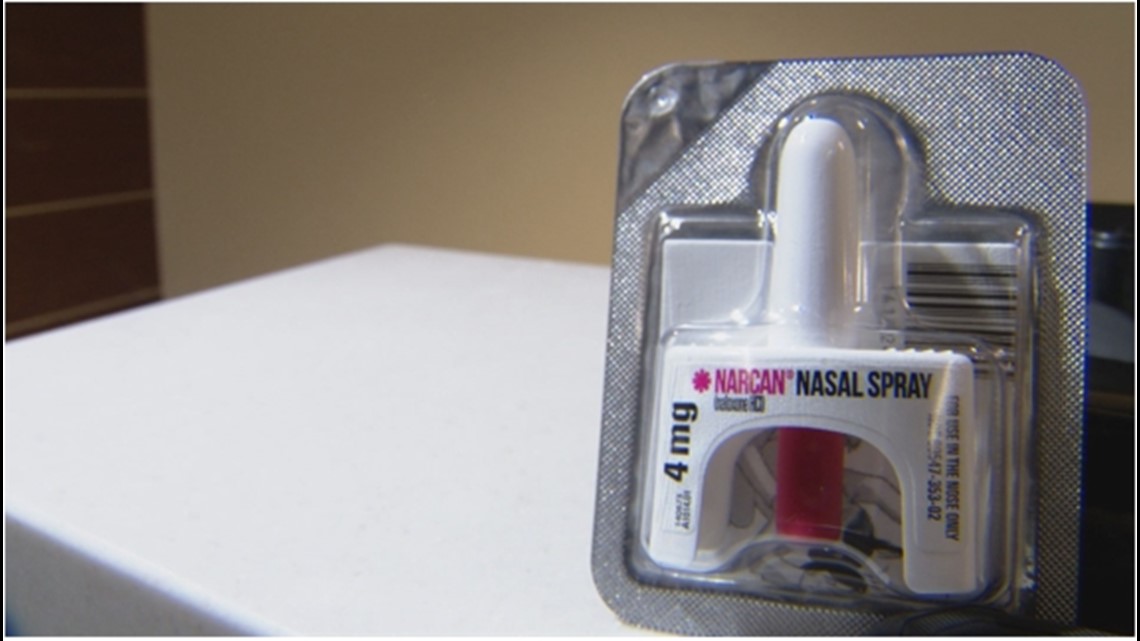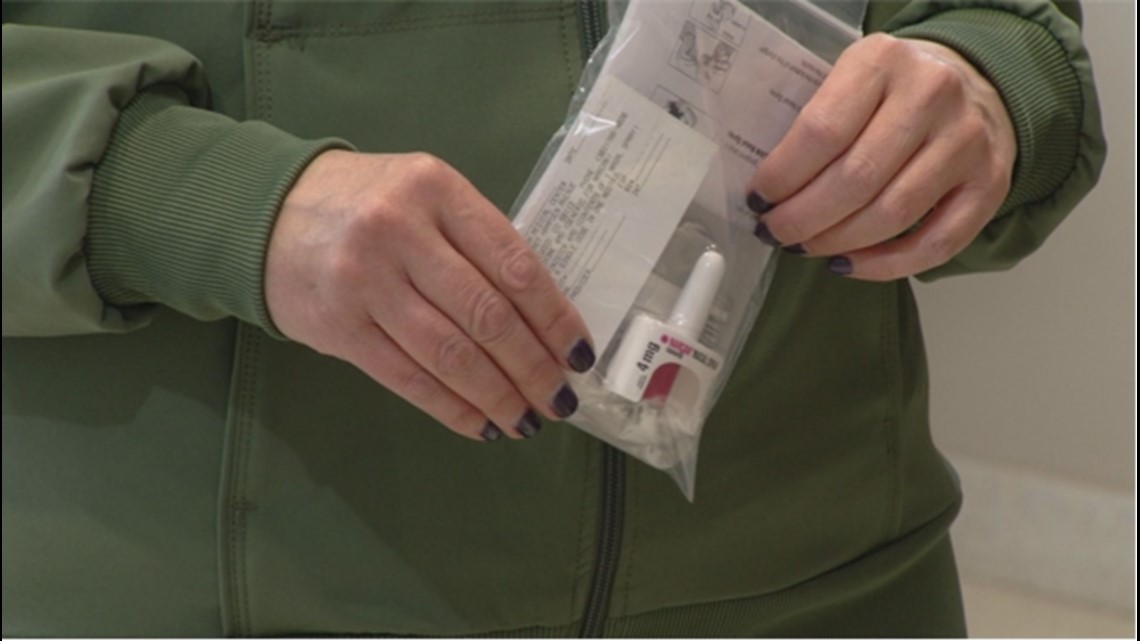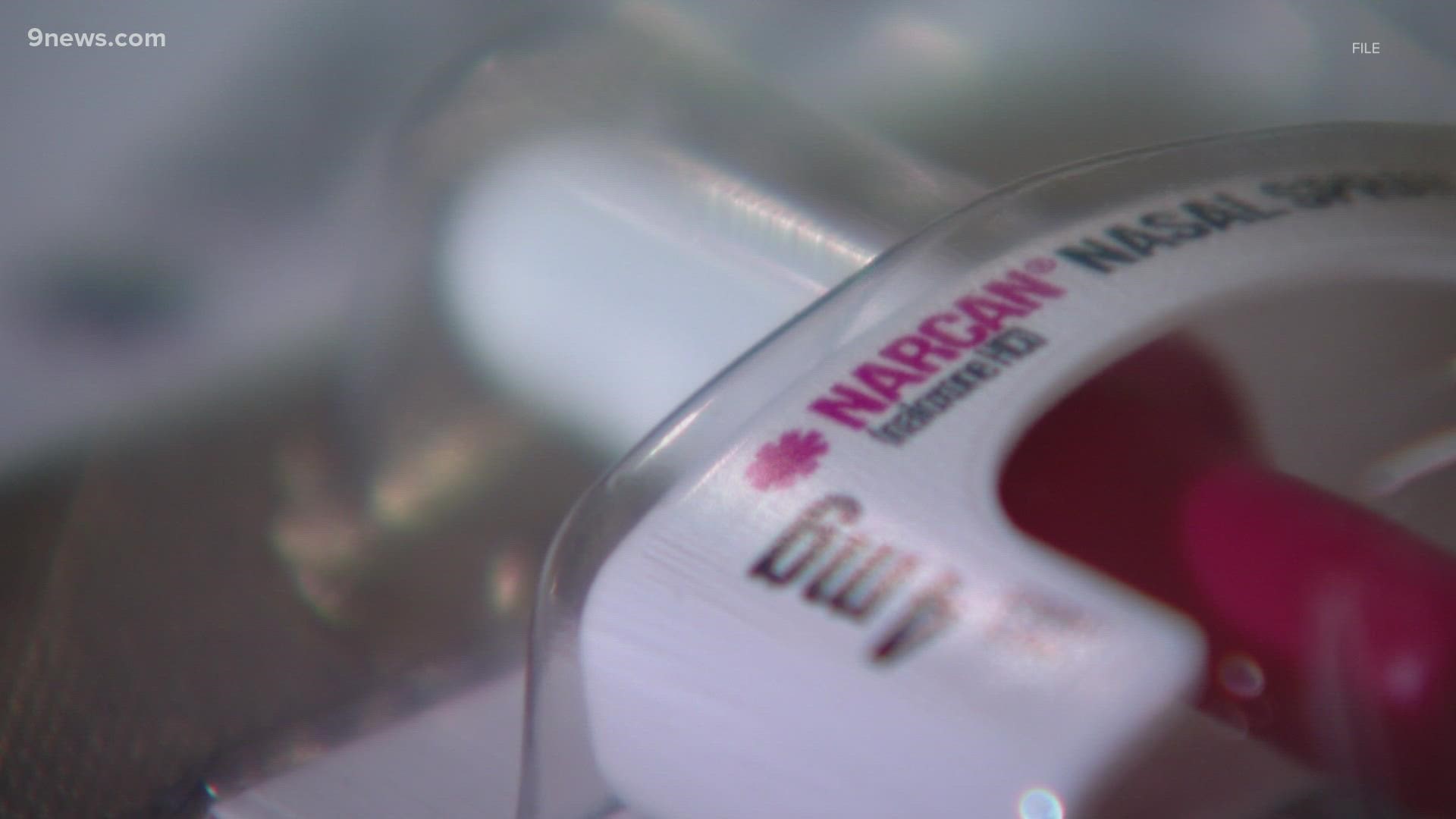BOULDER COUNTY, Colo. — In February and August of last year, Boulder County Public Health sounded the alarm on counterfeit pills and other street drugs containing fentanyl circulating in the community, concerned that it could significantly increase the risk of accidental overdose deaths.
The increase in fentanyl overdoses led to the Boulder Valley School District (BVSD) acquiring free shipments of naloxone for all of their schools.
Naloxone is a life-saving medicine that reverses the effects of an opioid overdose.
"Why we decided to have naloxone on hand in all of our schools and all of our buildings was really a response to what was happening in the outer community, but also because the folks who were experiencing the overdoses were so young," said Jordan Goto, the health and wellness coordinator for BVSD. "While they were not our students, we felt that we needed to have this on hand, not just for our students, but for any of our guests and any of our visitors that visit our buildings because overdoses and fentanyl, like we know, can be hard to detect."
BVSD is just one of four school districts in Colorado that have, or are utilizing the Naloxone Bulk Purchase Fund, which is offering the medicine for free to schools.


How the program works
The Naloxone Bulk Purchase Fund stems from a bill passed in the Colorado Legislature in 2019, which authorized school districts and nonpublic schools to obtain a supply of 'opiate antagonists.'
The fund itself allows different entities, like local public health agencies, school districts, harm reduction agencies and law enforcement agencies to apply for the fund, according to the Colorado Department of Public Health and Environment (CDPHE).
Other entities with publicly accessible automated external defibrillators (AEDs), which include rec centers, shopping centers and other workplaces can apply as well.
Healthcare settings and pharmacies are ineligible to apply.
When it comes to school districts, a spokesperson with CDPHE explained that schools must submit a policy that demonstrates that all schools within the district are authorized to purchase and use naloxone and have met requirements. These requirements include training all individuals who will potentially use naloxone.
Training has to include education around the risk factors for overdose, among other things. Once they submit a policy, CDPHE staff reviews the policy.
Schools then place an order through a designated wholesale pharmacy, which CDPHE is invoiced for, resulting in free orders.
CDPHE said that currently, the need and demand for naloxone is increasing significantly due to an increase in overdose deaths, fentanyl-laced drugs, the increased interest from schools as they return to in-person learning, and new requests from other first responder entities has increased the requests for naloxone.
Clear Creek school district, Boulder Valley school district, Mountain Valley school district and Cherry Creek school district all have, or are utilizing the fund.
There are 178 school districts in Colorado, and when asked about why more schools have not taken advantage of this, a spokesperson for CDPHE explained that they're currently doing outreach to school districts and expect more to sign up before the end of the school year.


Putting it into practice
In the case of Boulder Valley School District, Goto explained that those trained to use the doses of naloxone include all of their school nurses, as well as staff on each school's 'Emergency Response Teams.'
"So those look a little bit different depending on which building it is," Goto said. "Sometimes our teachers, sometimes our coaches and administration. It is not everybody in the school, but it is a specified emergency response team that has access to this medication and has been trained on it."
Since receiving their first shipment at the end of November, Goto explained that they had to use the naloxone once, but was unable to go into too much detail about the occurrence itself.
"Based on the signs and symptoms that the person was experiencing, we felt like they were experiencing an overdose ," she said. "And so we did deploy the use of Narcan or naloxone. Fortunately for that person, it was not an overdose, so there was no harm to the person."
According to the Food and Drug Administration (FDA), naloxone will not have any effect or harm on someone if it's used on someone believed to be having an overdose, but isn't.
"But we have used it, and again, it just goes to show we were so thankful to be able to have that as part of our emergency tools available to us," she said.
Goto added that the medicine is to not only protect their students, but also to protect any of their guests and visitors that are in the building.
"...to reduce the risk of an overdose or a death, I think that's our duty as not only school professionals, but as a community, as a whole to protect and serve all those we're really serving," said Goto.
The school district partners with the Healthy Futures Coalition to bring training, education and awareness of naloxone to the community.
SUGGESTED VIDEOS: Latest from 9NEWS

